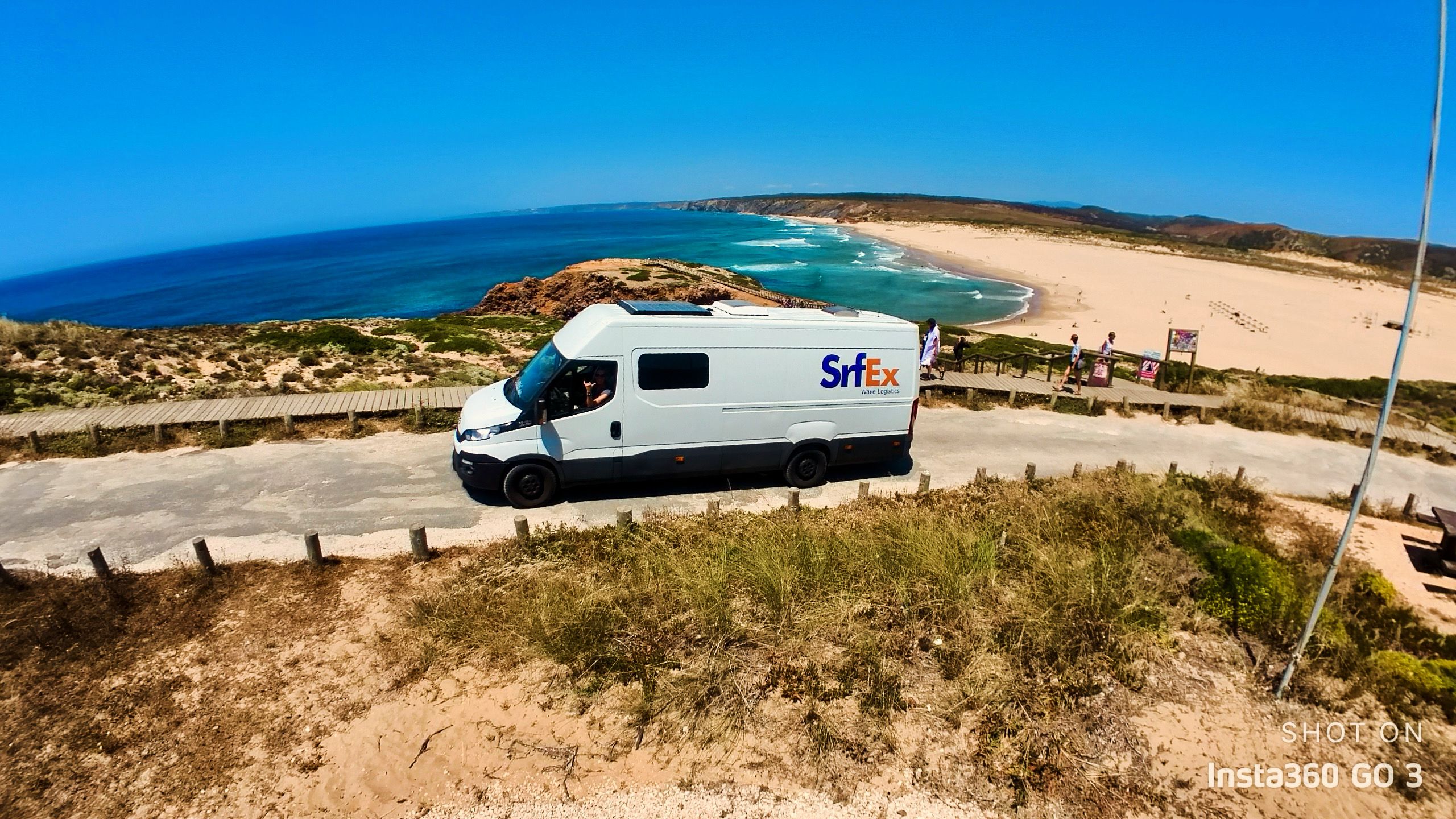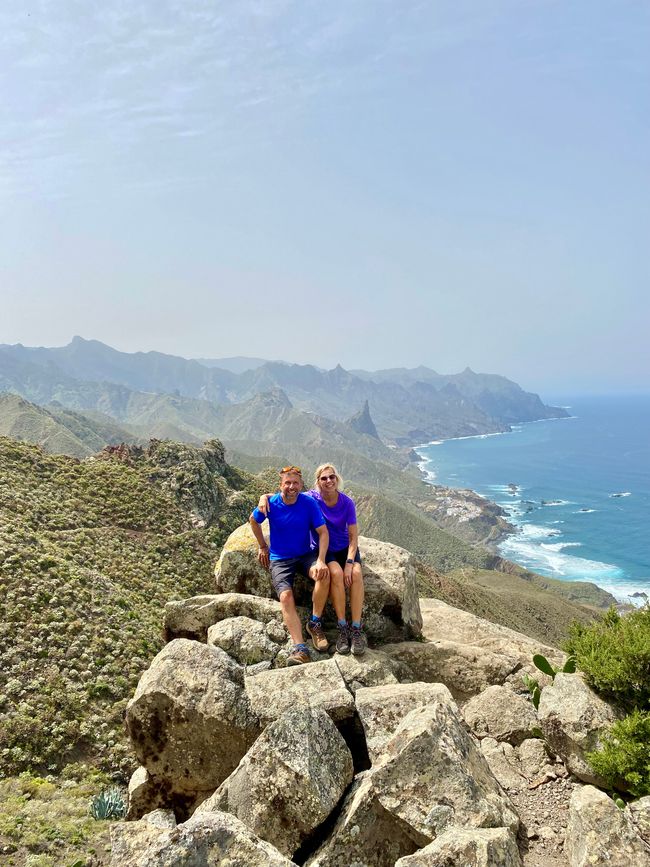
Coastal Nomads - Suzi, John & Betty
vakantio.de/coastal-nomads-suzi-john
Unknown Asturias - Green, White and Yellow Gold
La daabacay: 18.08.2024
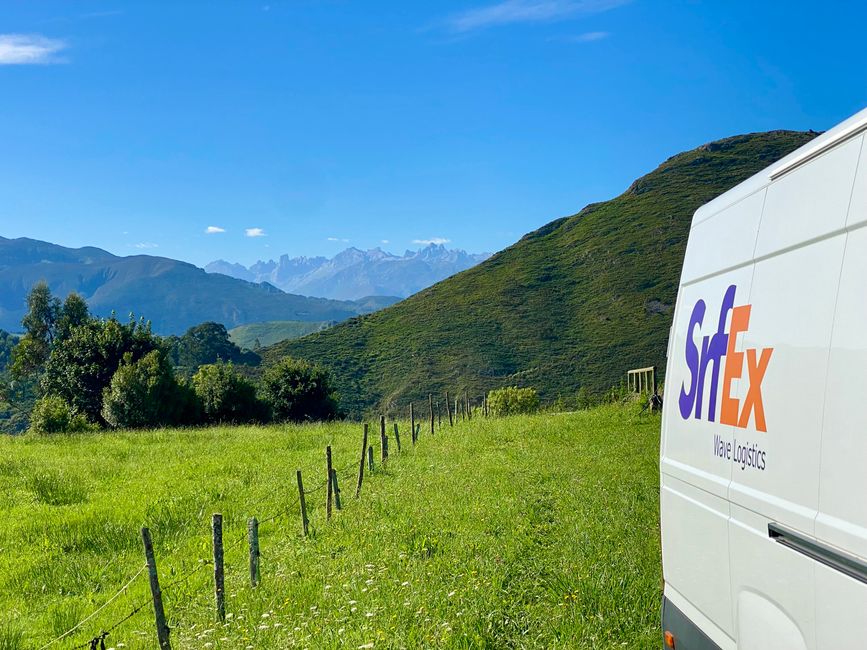

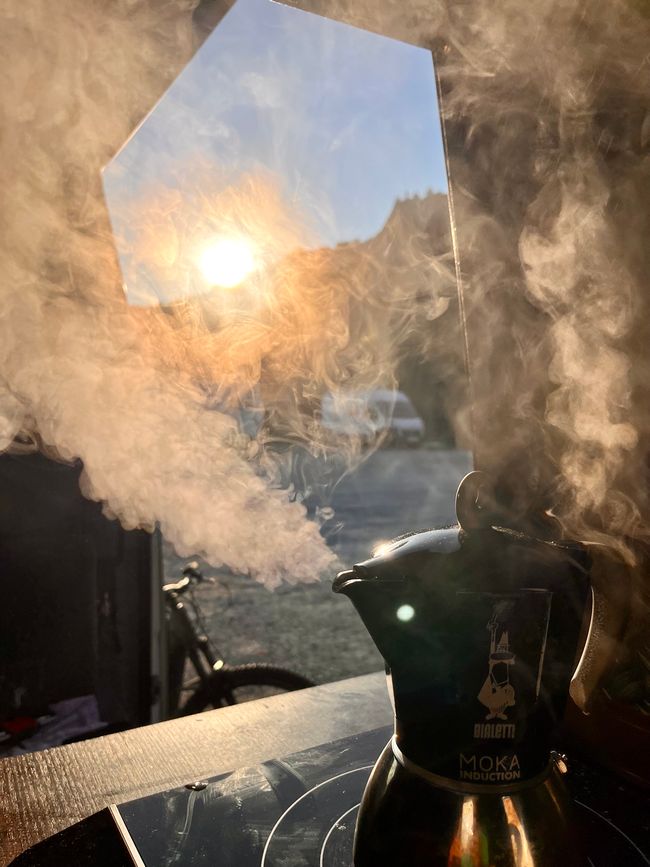
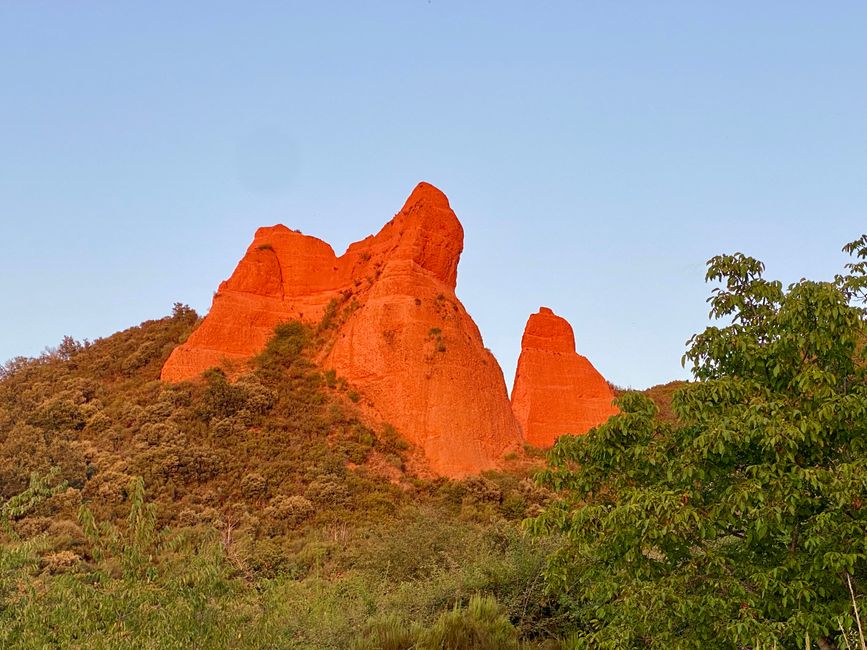
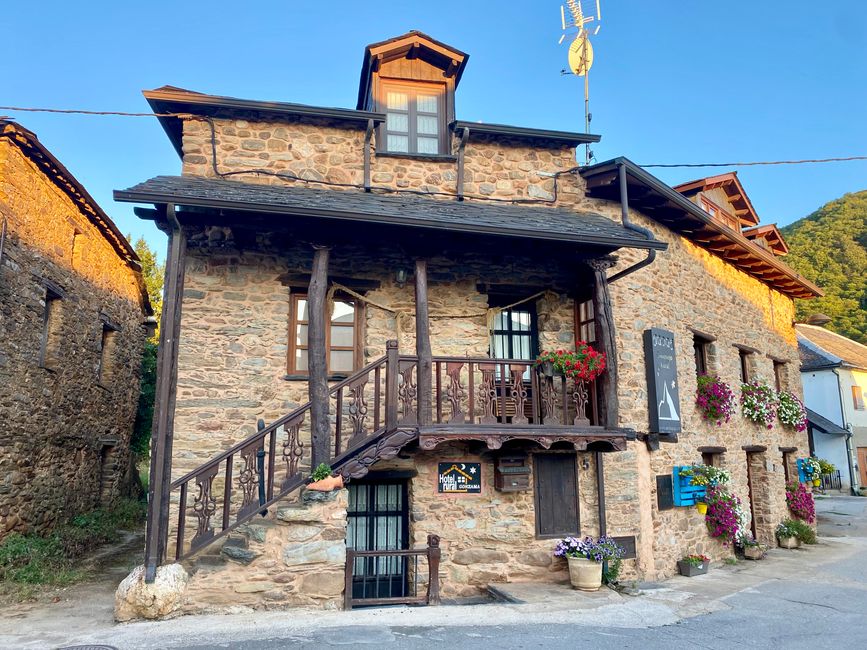
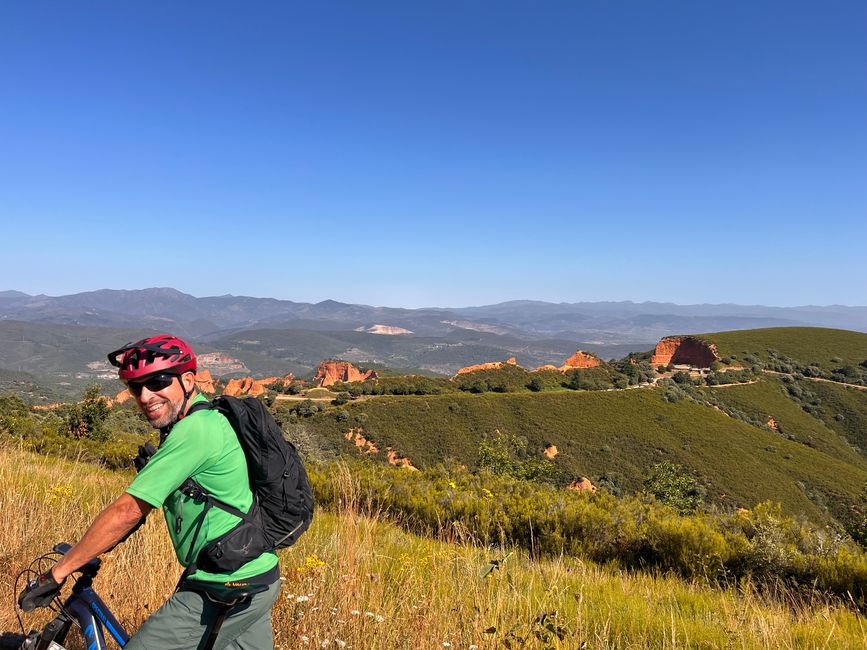
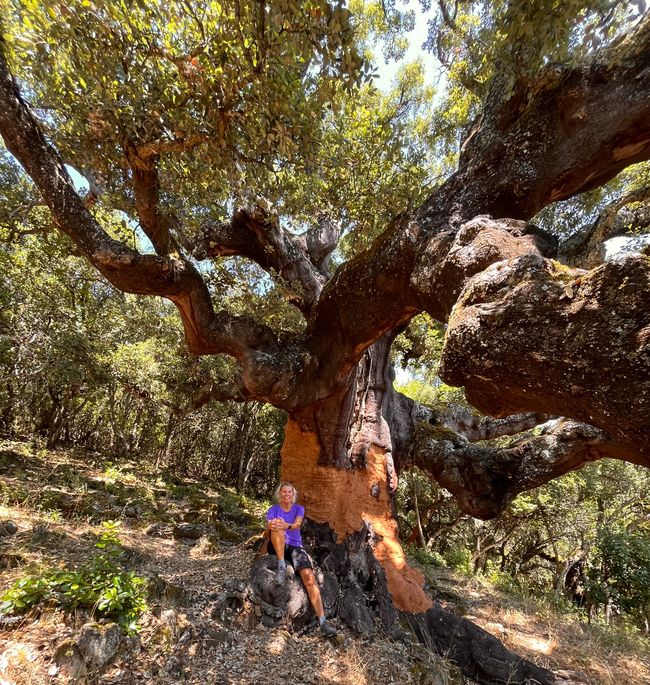
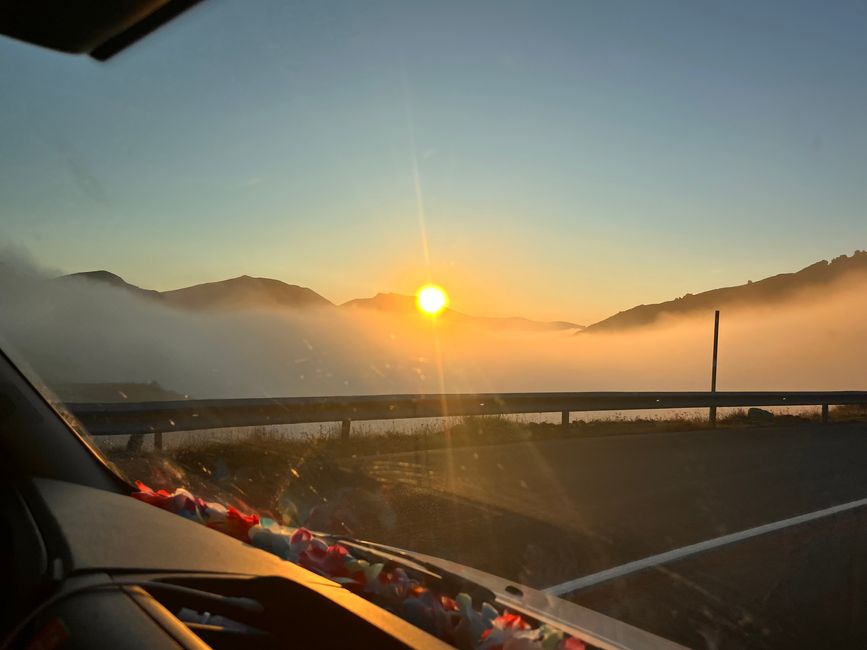
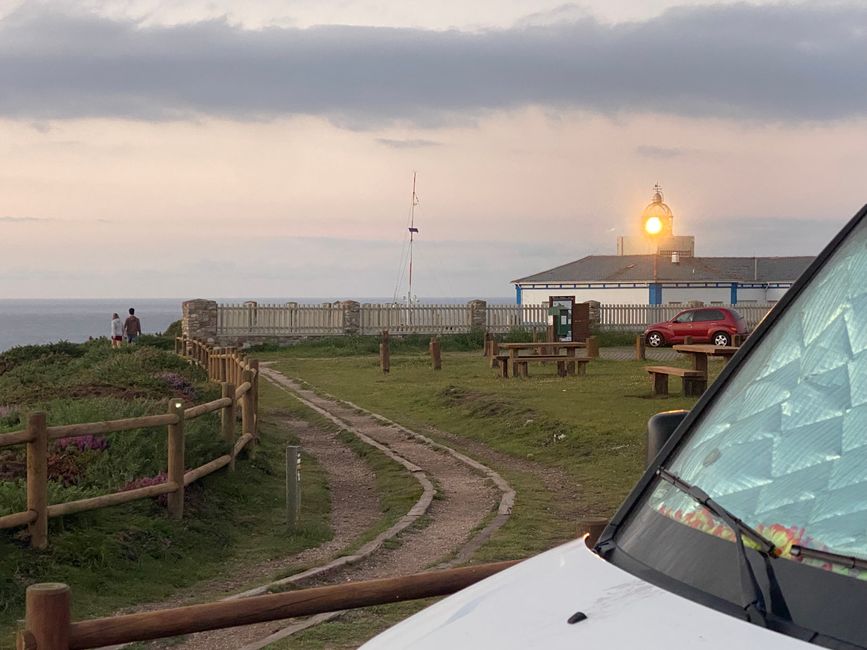
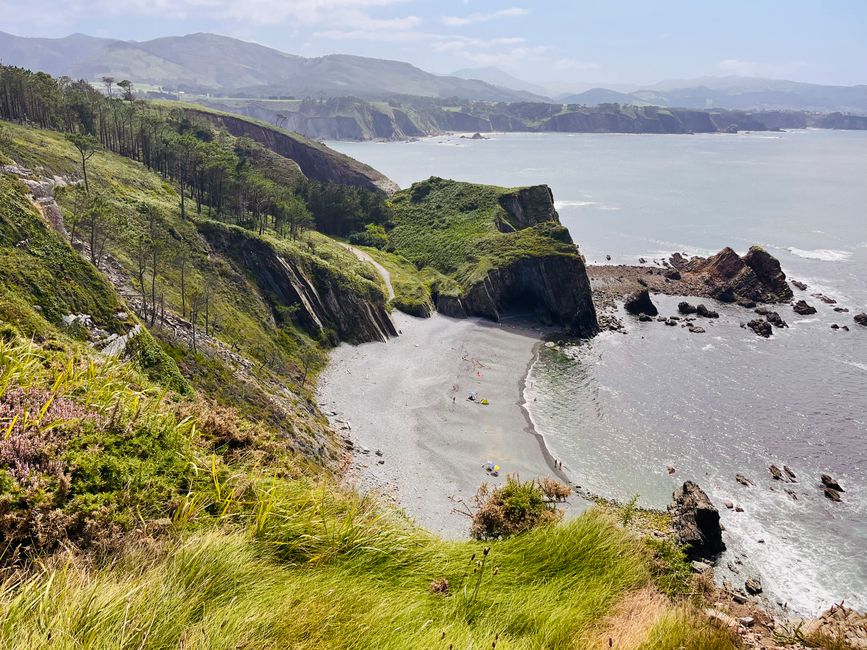

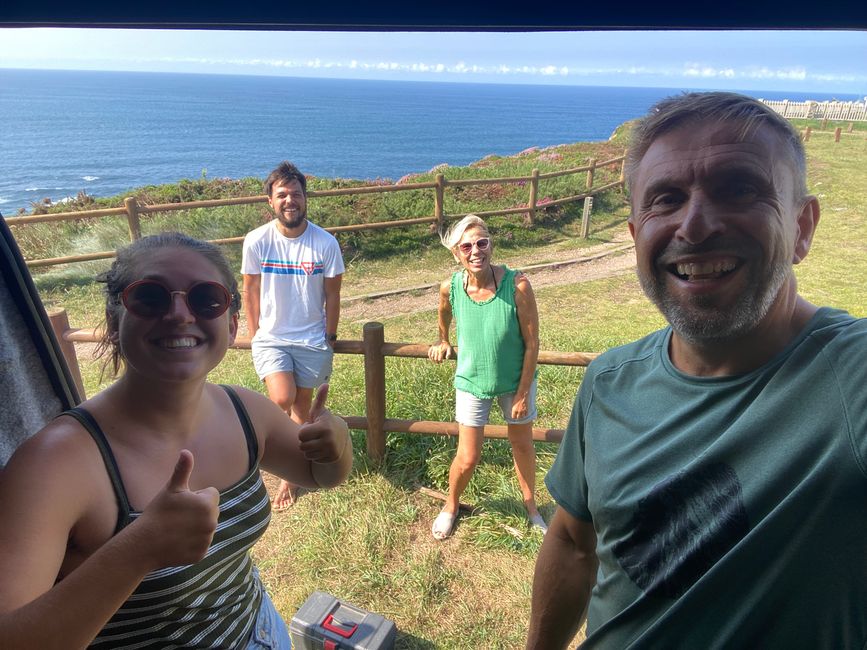
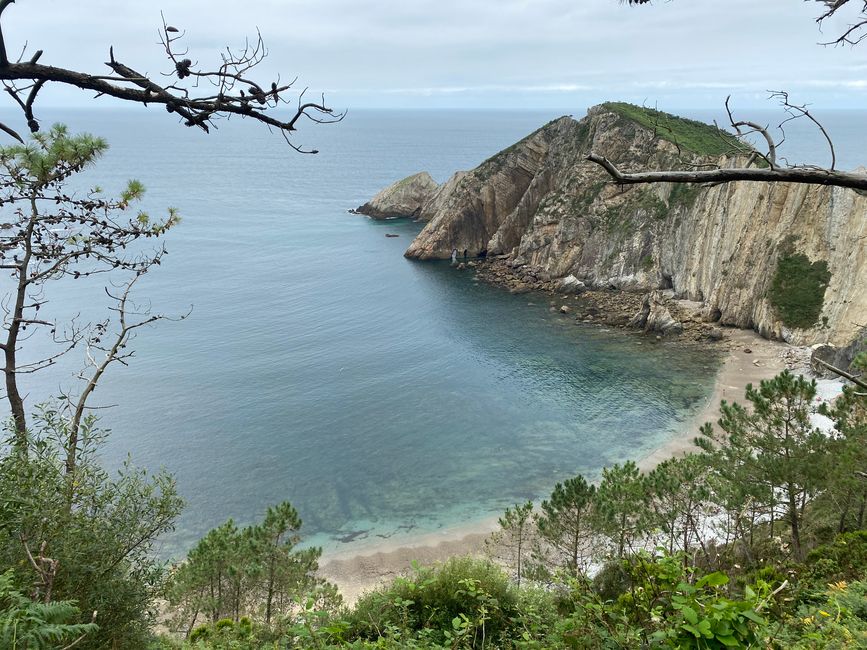
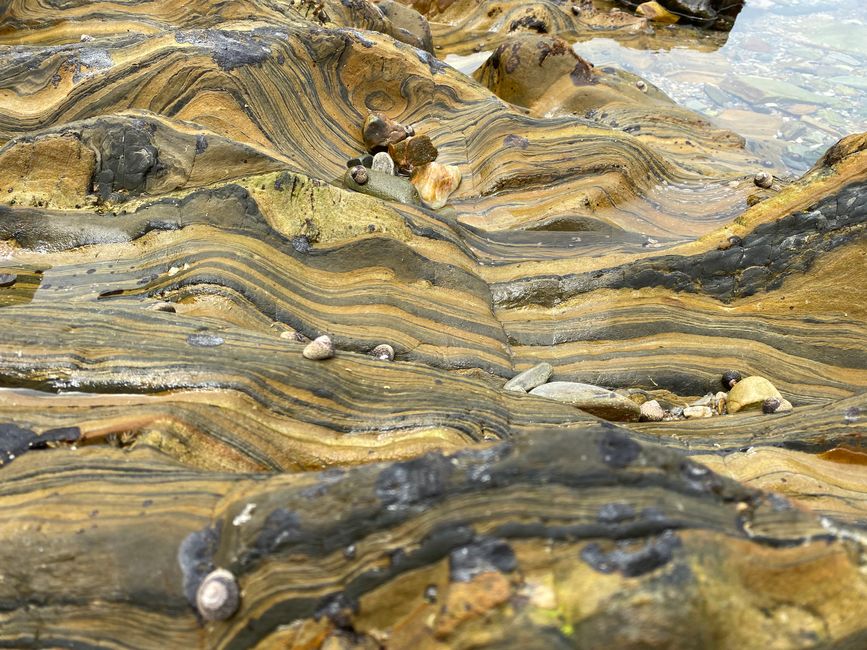
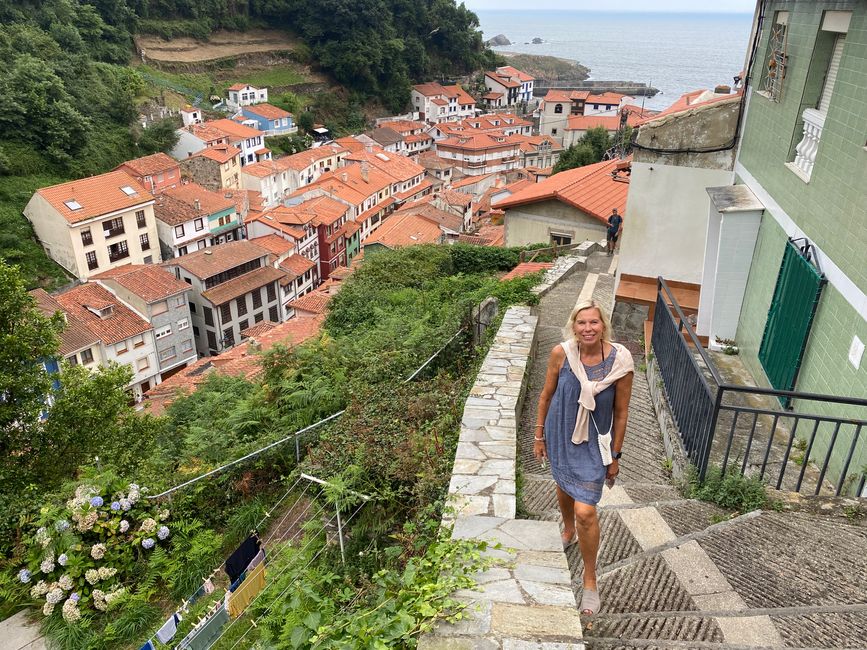
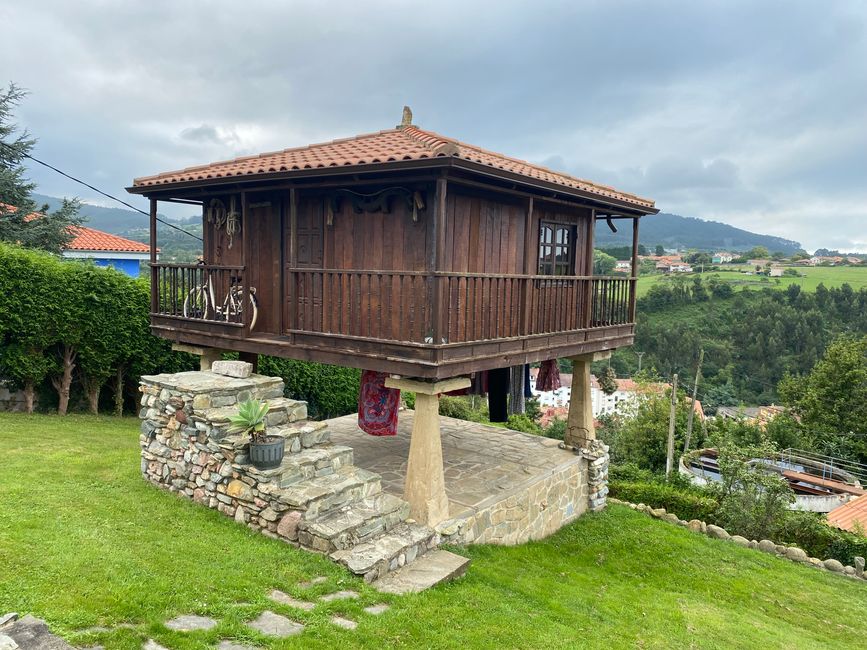
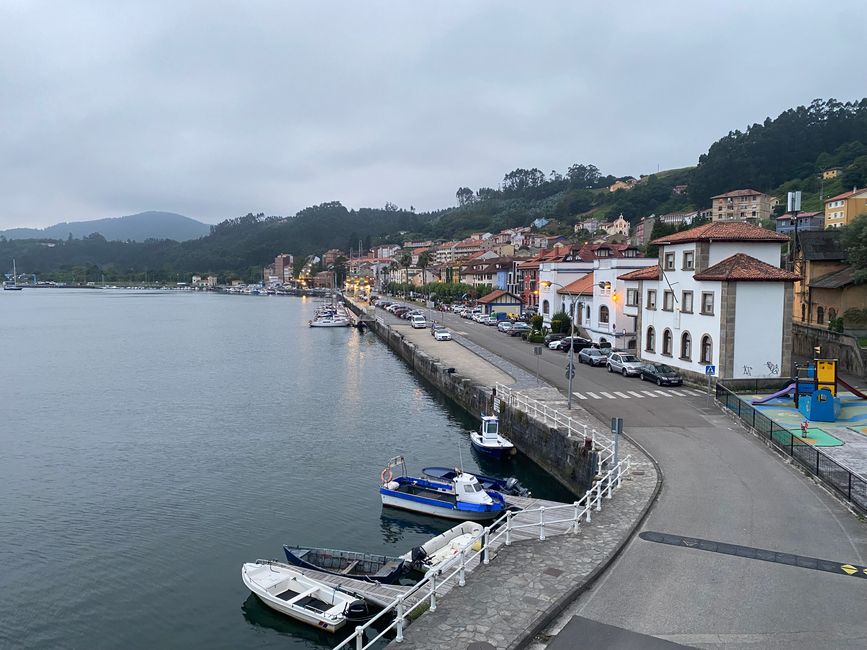
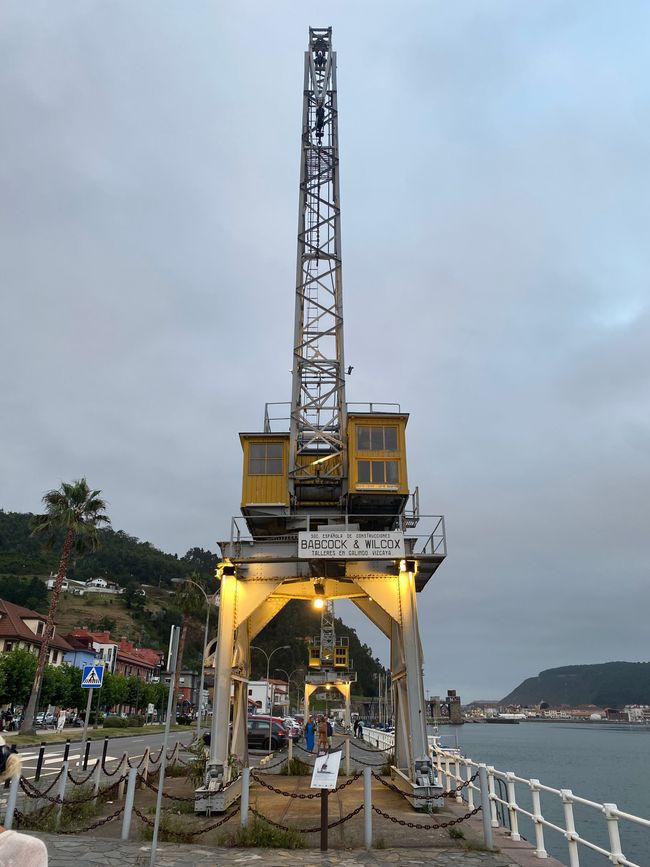
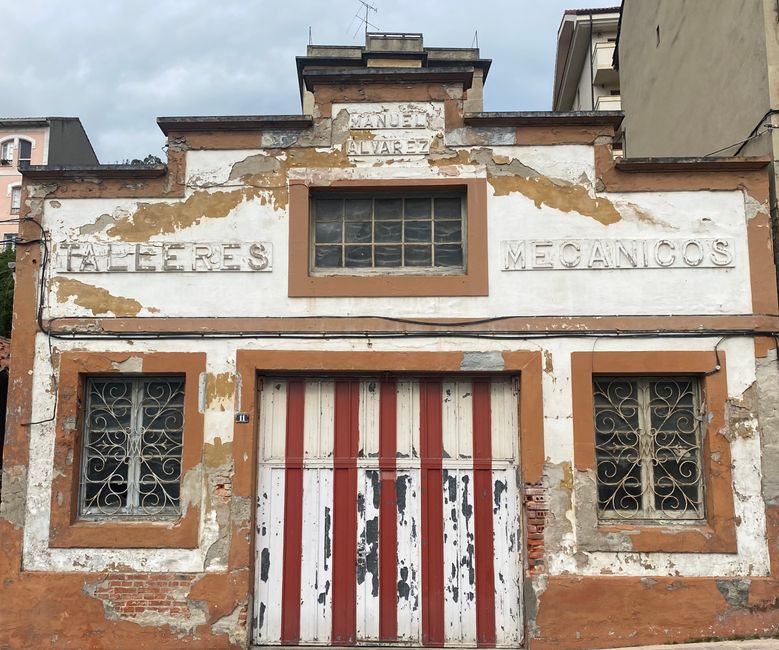
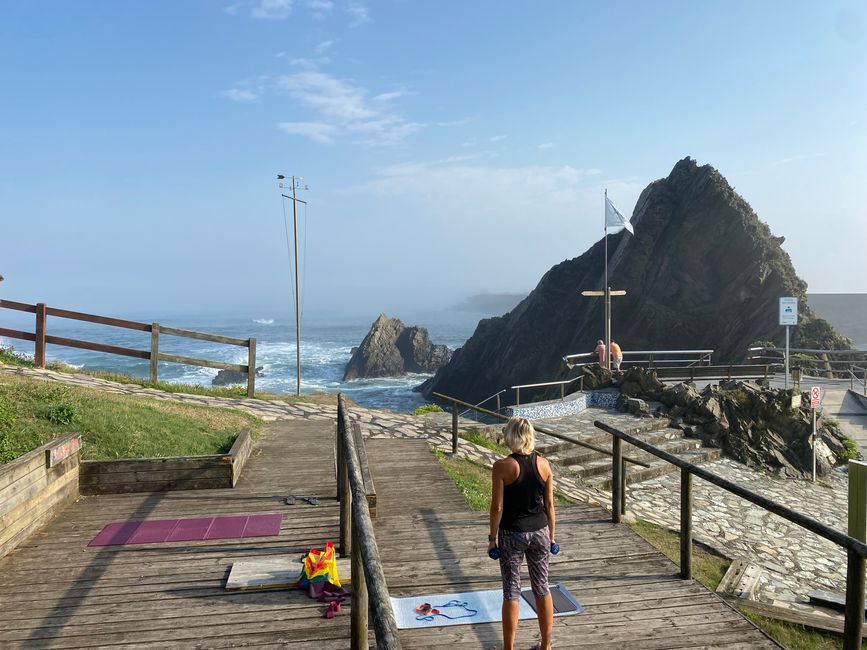

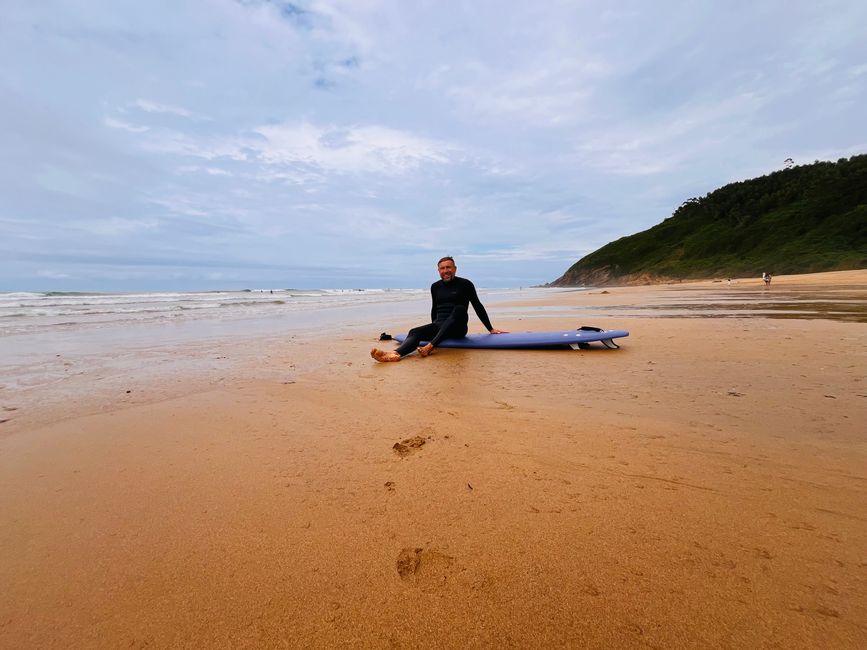
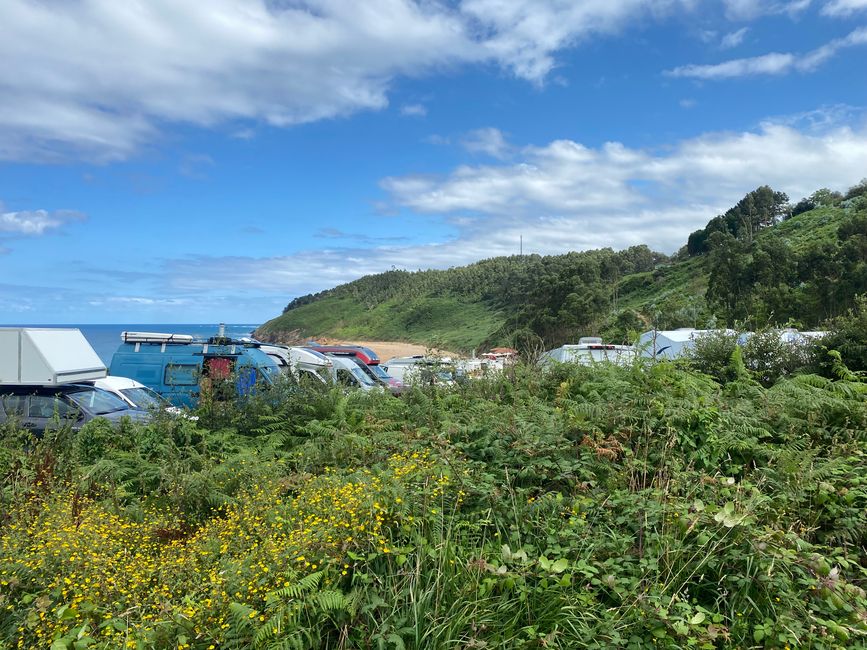
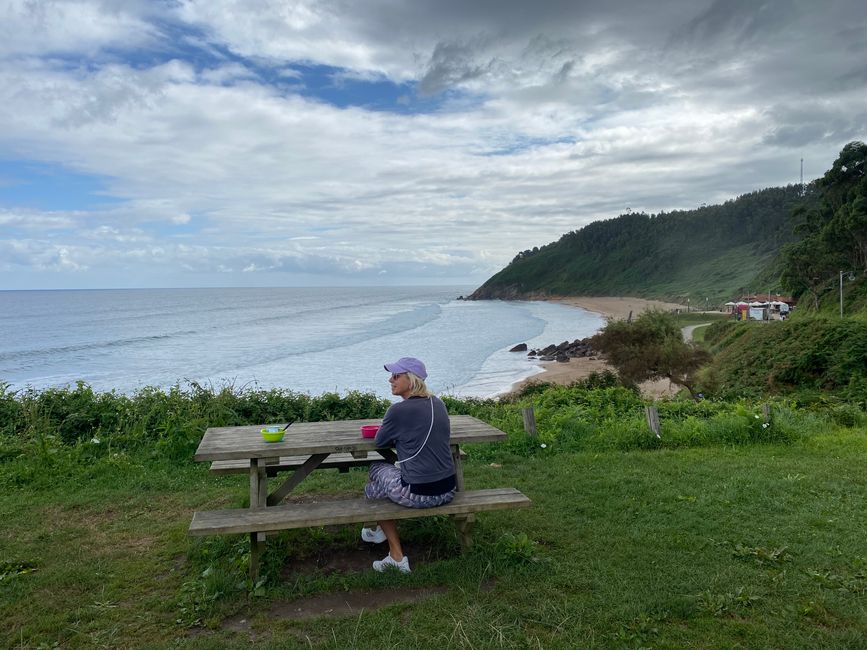
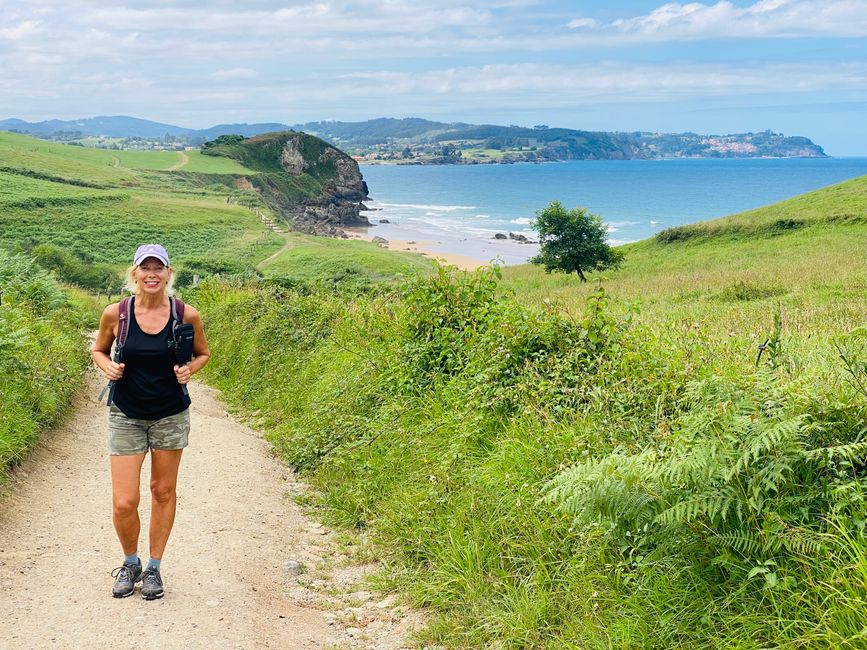
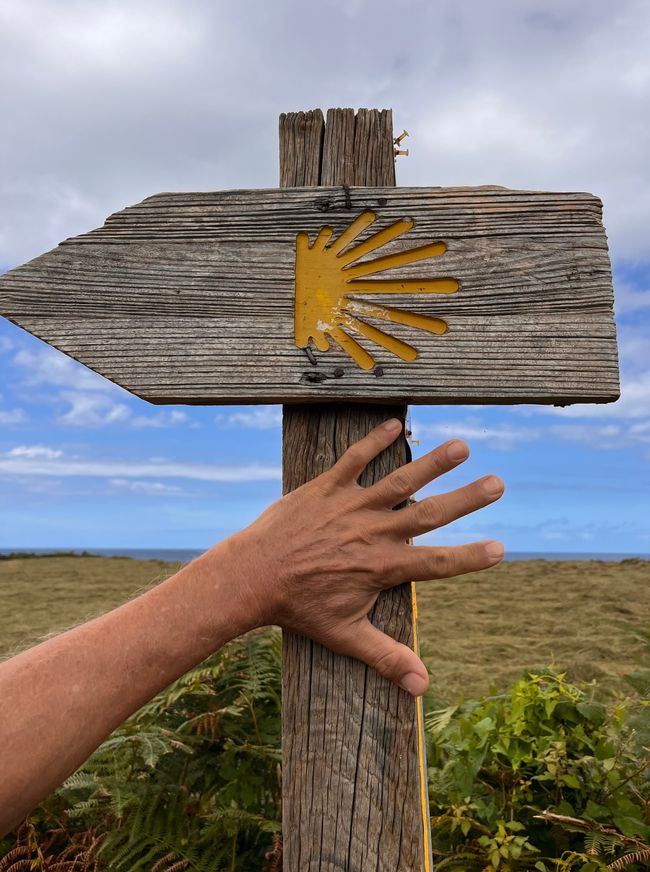


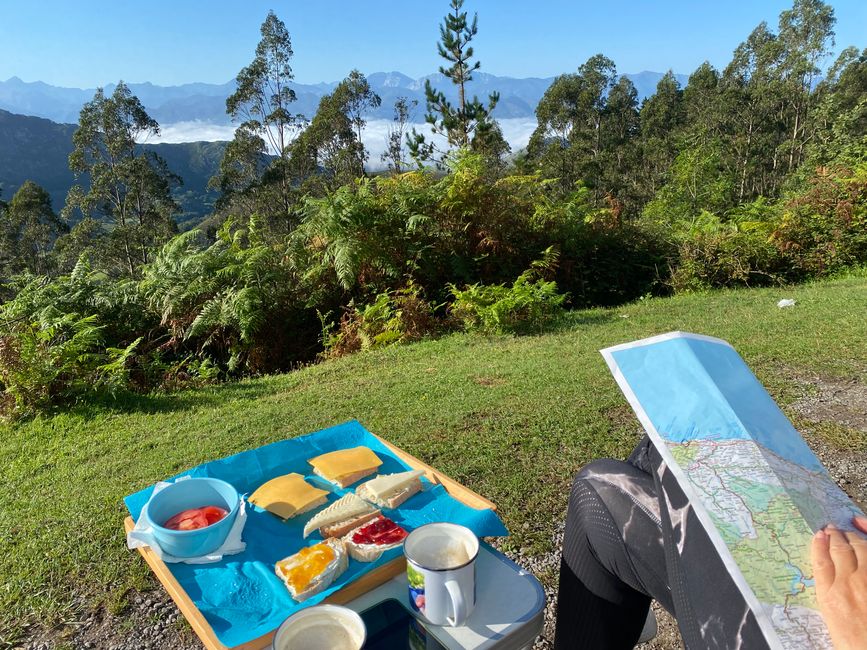
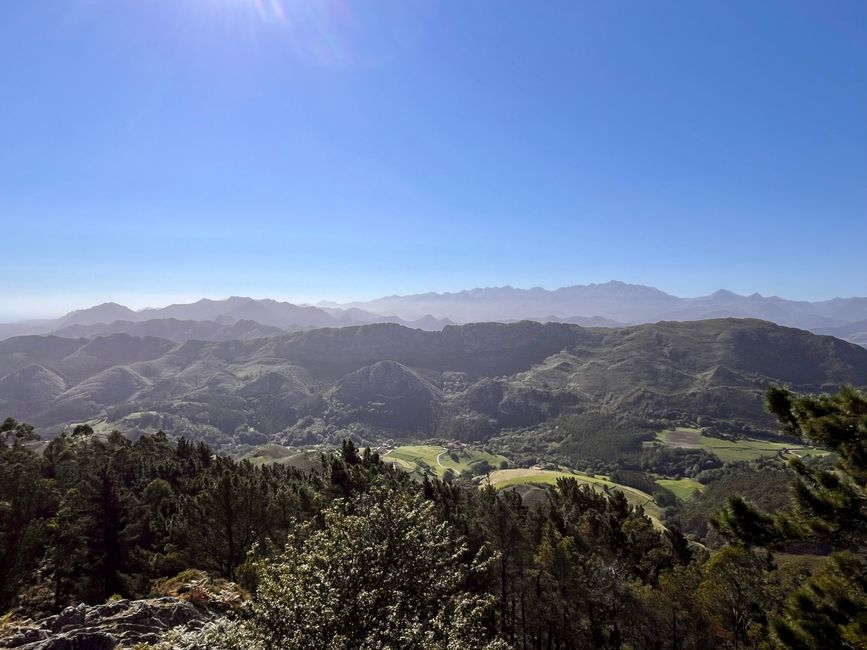
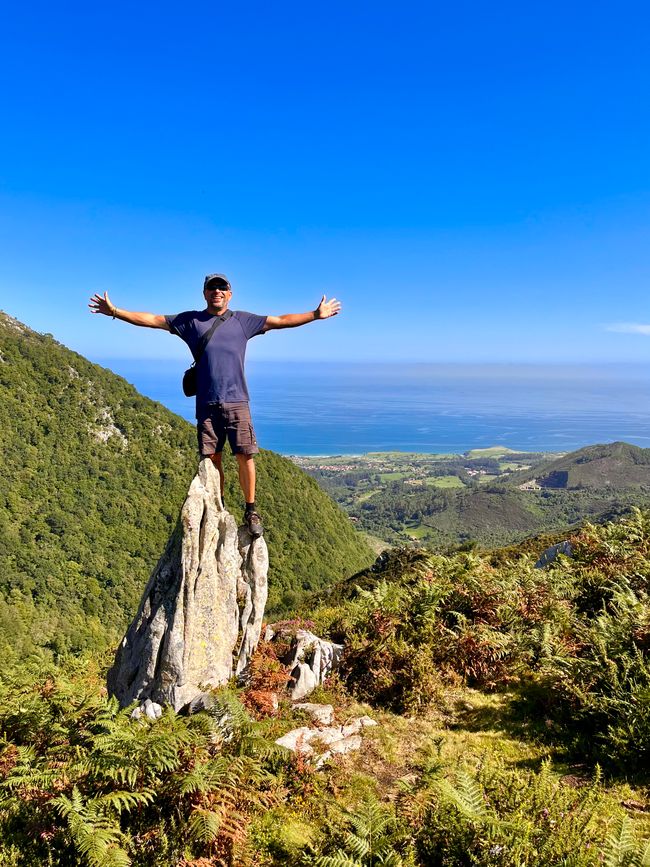
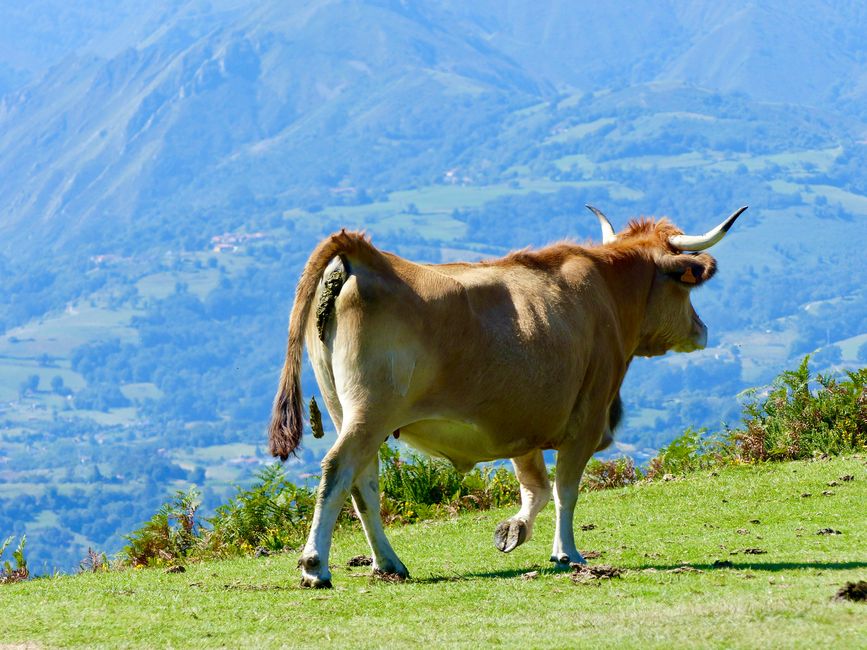
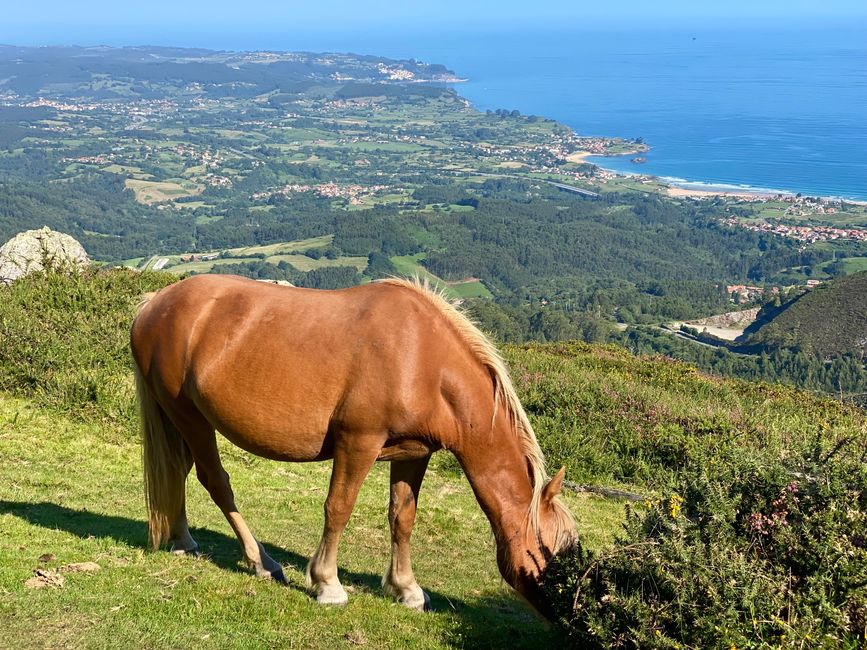
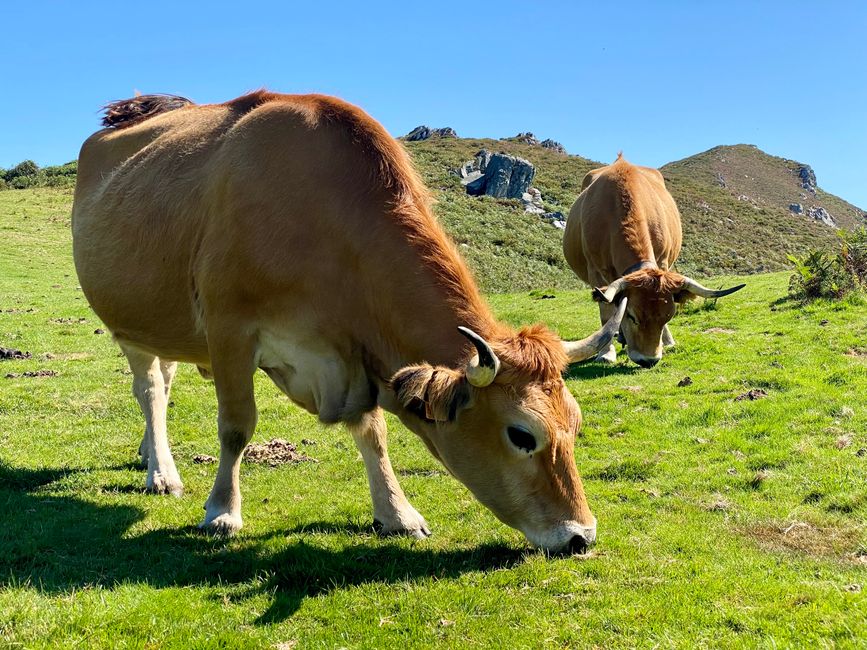
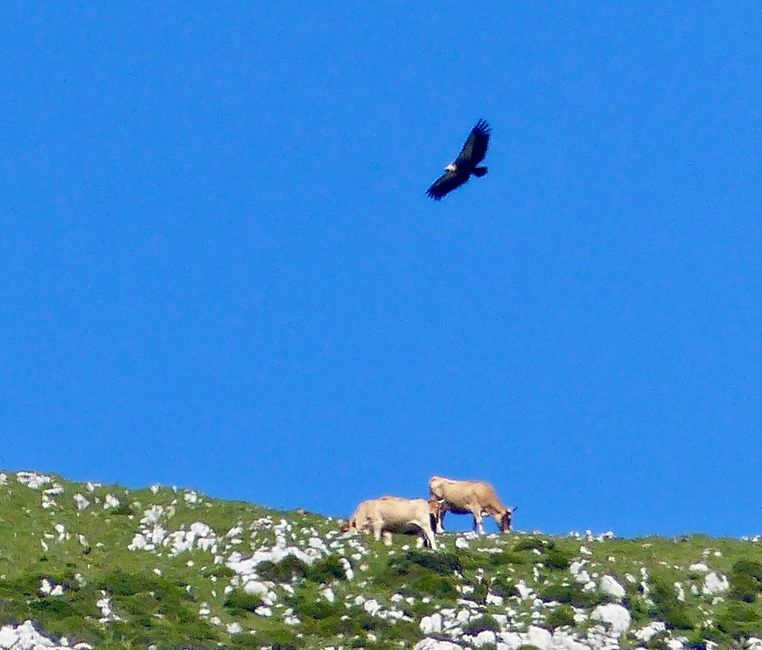

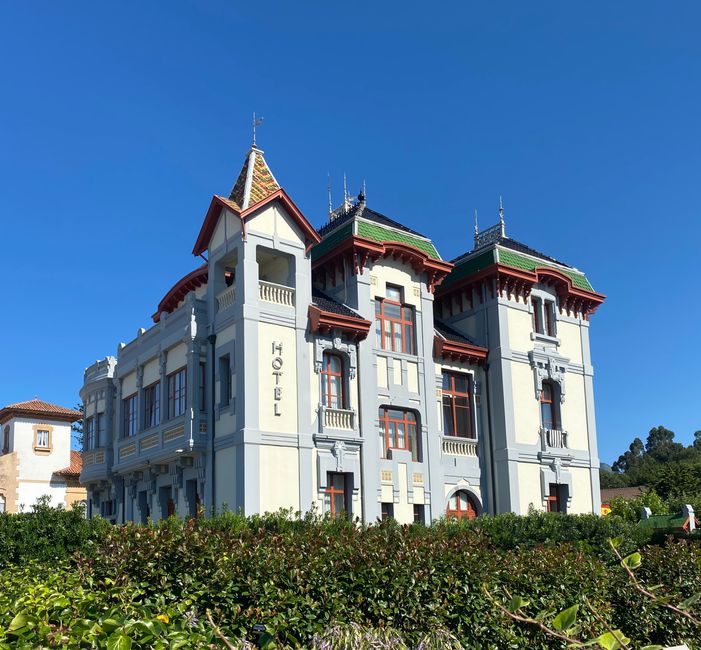
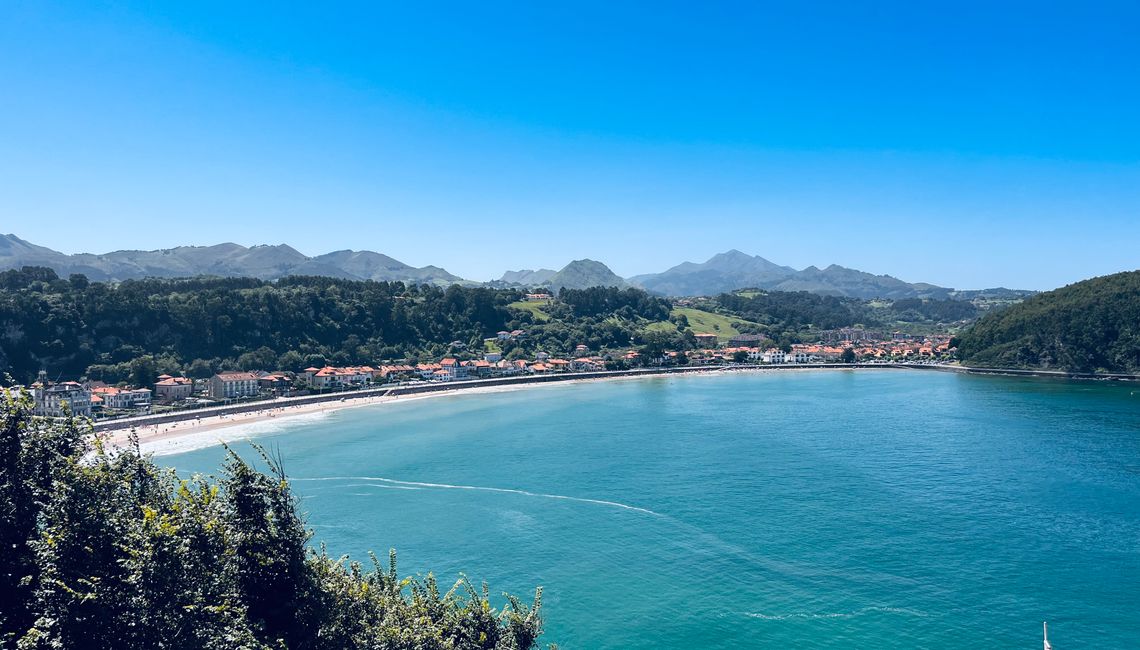
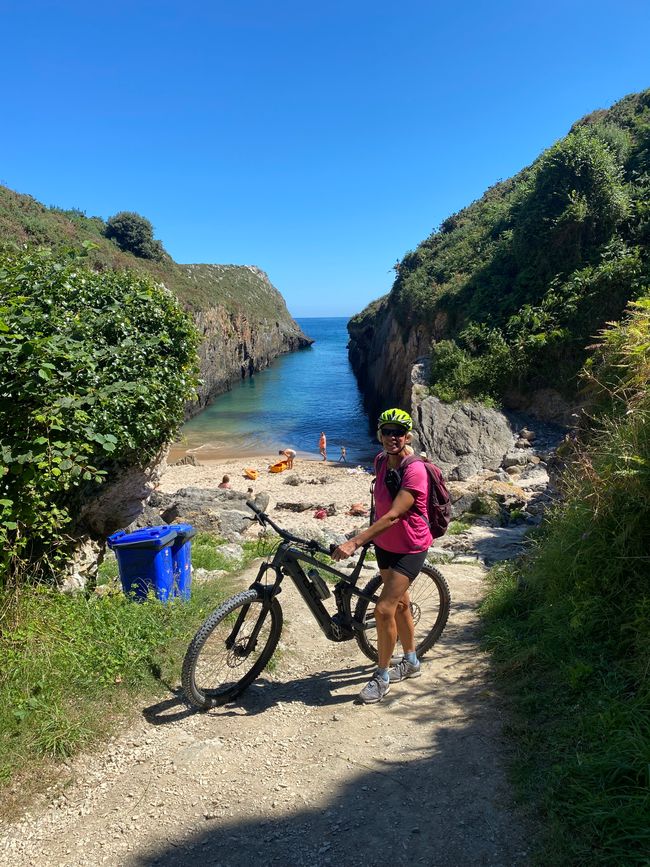
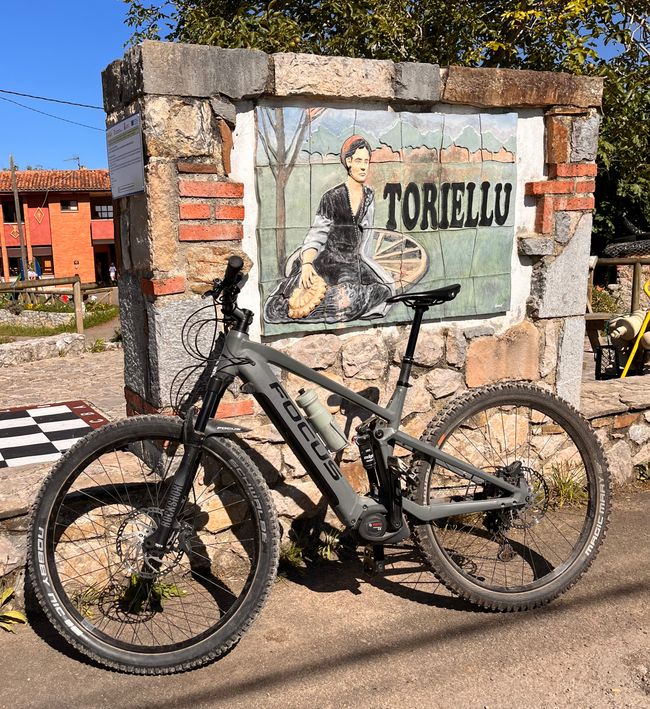
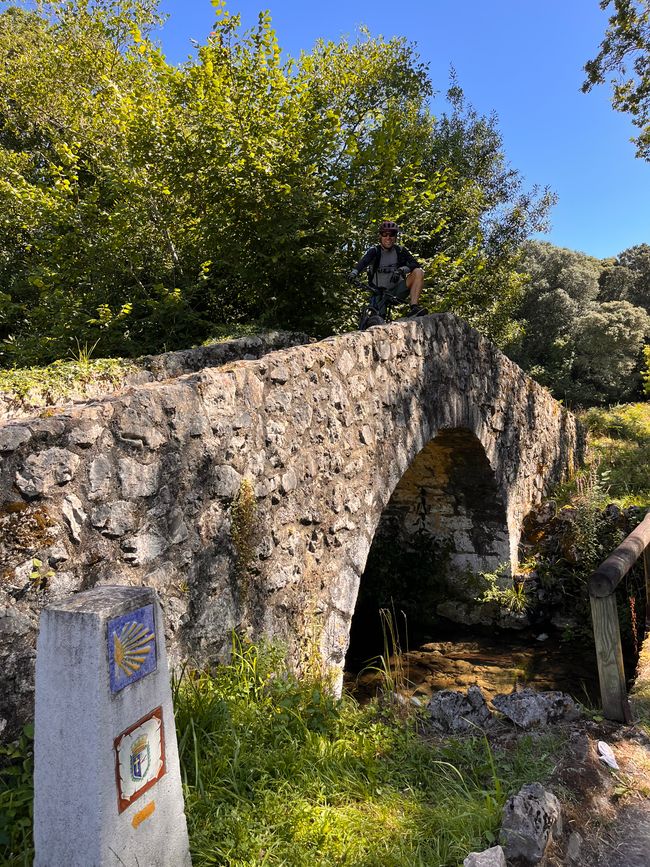
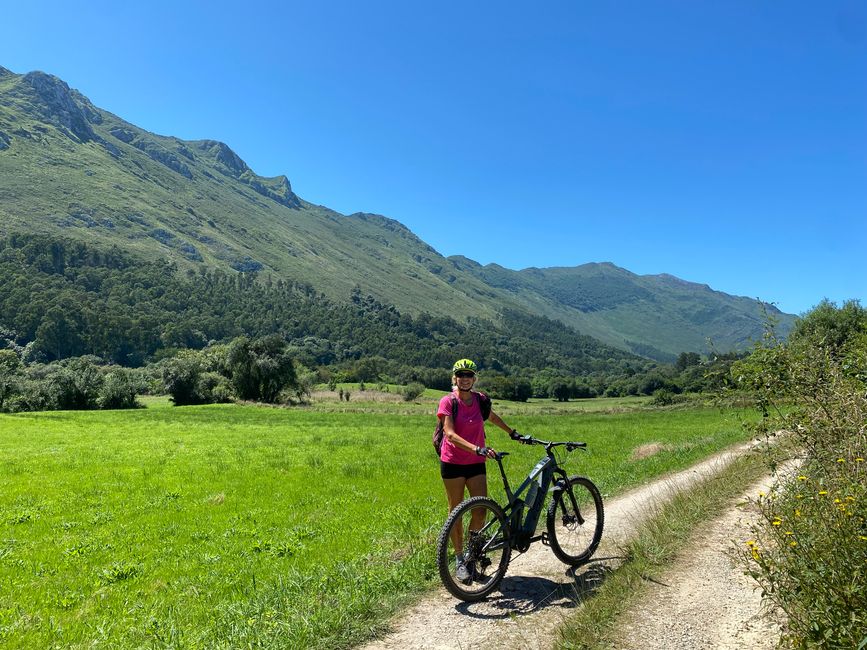
Ku biir Wargeysyada
Personal log entry from the houseboat Betty HH-VX 717: It is the year 2024, August 7, 1:11 PM. Due to the gloomy weather forecast, we have left the Galician coast and find ourselves on the A-8 highway (E-70), which leads south over the coastal mountains. We see nothing, as we are deep in the clouds. Here, the clouds seem to hang so low so often that the guideposts along the highway are equipped with electric lights! Just after crossing the ridge of the coastal mountains, the sun breaks through and the temperature rises from 15 to 28° C.
Our destination is Las Medulas, which is not in Asturias but in Castile and León, something we don't realize until later. Las Medulas was home to the most important gold mines of the Roman Empire and is now a UNESCO World Heritage Site. Having gotten quite hot during the day and needing a shower more than ever, we head towards the local swimming pool in Toral de los Vados. It only costs 2 € for entry, but you need a swim cap to bathe, which we naturally do not have. We don’t want to spend the 1.50 € to buy the cap and try to explain to the lifeguard that we just want to shower. Apparently, he takes pity on us homeless vagabonds and lends us his swim cap! This way, I can also enjoy the little water slide park at the swimming pool ;-)
In Las Medulas, one can easily spend the night at the parking lot of the abandoned cemetery on the outskirts. From there, you already have a view of the mining area. The red sandstone looks extremely gold-rich in the setting sun! The next day, we take a biking tour through the mountainous area. The gold mining extended over many square kilometers. Over 250 years, the Romans are said to have extracted a total of 1,600 tons of gold with the help of 60,000 workers. Entire mountains were removed, and the gold was washed out of the rock using water from a 100 km long canal network. The workers were predominantly fed with chestnuts, and these trees still dominate the landscape today, alongside ancient cork oaks. Our biking tour escalates a bit again; in sweltering heat and complete wind stillness, we climb nearly 1,000 meters in altitude and return to the van completely exhausted. But it was worth it; even the little village of Las Medulas at the edge of the gold mines is a gem and seems to be out of time.
Inland, it is said to get as warm as 38° C, so back to the coast we go! We cross the coastal mountains again towards Asturias and are amazed to encounter the ski area Leitariegos at an altitude of 1,600 m. Now in summer, the lift facilities and large parking lots are deserted. We had actually imagined spending the night there in the sunset, but we find ourselves back in the clouds, there is a sharp wind blowing, and it's chilly. In the dusk, we drive down an endless narrow mountain road into the valley and spend the night in the not-so-inviting mining town of Cangas del Narcea (mining was the most important economic sector in Asturias until the 1970s).
Upon reaching the Asturian coast, we head as 'lighthouse fans' to Cabo de Busto with the Faro de Busto. We are excited to be able to look far out to sea from a great parking spot again. Around the cape, there is a coastal hiking trail along the lush green cliffs. At each viewpoint, there is a slate with a saying; one translates to, 'Do not fill life with years, let years be filled with life,' and we think that fits quite well with our journey! Back at the van, Susi visits a 'secret beach' while I take some time for crafts at the van. There's always something to repair or optimize... By the way, I had wanted to place a bet with Susi in the morning (unfortunately, she generally does not bet with me...) that we would meet Kiki and Reinhard's daughter and her boyfriend today! They wanted to take over the parents' motorhome (whom we met in Galicia) in Portugal and bring it back to Solingen combined with a vacation on the Portuguese and northern Spanish coast, which we think is a very cool idea! Around 5 PM, I then win my unaccepted bet: Carla and Stanley are standing in front of our van, which they spotted from afar due to the conspicuous SRF_EX logo. It’s a very small world!! We spend a very nice evening together before our paths once again separate the next morning. But we will meet at least once more. We need to shed some weight, and the (not used for months) E-guitar and an unnecessary sail are leaving with Carla and Stanley on their trip back to Germany. A huge thank you to Solingen!
Freed from about 10 kg of weight, we drive on. We stop at the Costa del Silencio. Here, the cliffs drop almost vertically over 100 m into the sea, and deep below lies Playa del Silencio. The name is program; due to the tall cliffs, it is sheltered from the wind, and hardly any waves roll into the bay. The scenery is breathtaking; in the USA, this would have been made into the 'most scenic rocky beach bay ever'! As everywhere in Asturias, parking near the water is not so easy, as the coastal mountains extend right up to the coast and the available space is very limited. Here at Costa del Silencio, clever farmers earn their money by turning their meadows into parking lots in the summer and charging between 3 and 10 € per day as parking fees. In some cases, you are also allowed to stay overnight (without the so-called 'camping behavior', meaning no table, chairs, or awning outside). To conclude the day, we also visit Cudillero, the 'most scenic fisherman’s village' in Asturias. Also very beautiful, but 99% of the people in the alleys are tourists, and the spark just doesn't fully ignite.
More to our liking is the coastal town of San Esteban; from here, the Asturian coal, which was brought to the coast via the Rio Nalon, was once shipped all over the world. Due to the remnants of the (long discontinued) coal mining in the hinterland, the beaches around San Esteban are rather dark in color. San Esteban is relaxed; the town still belongs to the residents, and the old docks and loading cranes have been preserved and give the town a wonderful flair. With the motorhome, you can easily park at the sprawling dock facilities. The only area that is completely overcrowded is the city beach on the other side of the river; it is the weekend and perfect weather, after all. We stay for two nights in San Esteban.
The next day we head to various beaches. Not entirely easy. The beach parking lots are overcrowded, and Betty's 7.2 m length does not make it easier. We hardly had any issues with vehicle length in the past 7 months! In the end, we end up at Playa Espana east of Gijon (we skip Gijon, we also need to cover some distance, as Susi likes to say). Playa Espana is a nice little surf beach with a large (and empty) meadow for paid parking right at the spot. This calls for a small wave-riding session, which is immediately implemented! Unfortunately, overnighting here is prohibited ('No Pernoctar', no camping), no wonder since the local campsite is just a few steps away. We spend the night on a shady, damp forest parking lot above the village, although shade/forest/damp is not really our thing.
A bit further east, we discover Playa Arenal de Moris. Here, the local farmer has also converted a steep meadow directly by the beach into a parking lot where overnighting (still) is tolerated. But we are reminded not to 'set out a table'! Are we actually the fools for adhering relatively closely to such guidelines while the French next door are fully engaging in camping life and the Dutch family is reserving their picnic table with their tablecloth for two days?? Whatever, we behave as we see fit, and we can defend wild camping! There’s a nice (=suitable for beginners) wave rolling in the bay, and I enjoy another nice wave-riding session. We take a coastal hike along the Camino de Santiago, whose path we have crossed repeatedly since Portugal, and stay at this beautiful place for a total of two days! Usually, I am the one who finds it difficult to move on, while Susi has more nomadic blood in her veins and often urges to hit the road.
Asturias's coast is also known as the Costa Verde, the Green Coast, and it truly lives up to its name. It somehow seems even greener and the vegetation lusher than in Galicia, with the up to 1,000 m-high (green-covered) coastal mountains often pushing close to the coast. This leaves little room between mountains and beach, which leads to Asturias (forcibly) being relatively unmotorhome-friendly. Many places immediately block their (narrow) village entrances for the 'white goods', which invade Asturias en masse via the coastal highway A-8 in the summer. Signs saying 'Prohibido Acampar' are more the rule than the exception. Nevertheless, we always find our little spot...
Since the mountains are so close, we head there too. Very early in the morning, we head to Mirador del Fitu, just a stone's throw from the coast. From there, we embark on a mountain hike, like one you might find in Allgäu. The ringing of bells from the ever-present cows in Asturias accompanies us on the mountain path over meadows and fern forests up the ridge. Additionally, there are wild horses here that are very trusting. All of this is without any fences, thus also the cow patties and horse apples on the mountain roads. But unlike in Allgäu, one can see the Atlantic Ocean throughout the entire hike. Above the summit of nearby Pico Pienzu, very large birds are soaring in the thermals, which we can identify as griffon vultures with the help of our telephoto lens. Wow! Actually, we wanted to stop at an 'Almrestaurant' on the way back, but the access road is so tight that we would undoubtedly get stuck with Betty. Hunger drives us back to the coast via narrow mountain roads, fortunately, there is hardly any oncoming traffic.
In the coastal town of Ribadasella, we initially want to use the local, free motorhome parking space only for loading and unloading. However, since we are very hungry, thirsty, and in need of a swim, we take a look and then simply stay on the overcrowded parking lot (it’s mid-August and high season). It’s about a 15-minute walk from the parking lot to the city beach, which is bordered by a long promenade featuring beautiful Art Nouveau villas that were once built by Cuban returnees (or so the guidebook says). Despite the overcrowding, it is completely quiet at night in the parking lot. We have always experienced this during our entire Canary and Spain trip. And in the morning, we, as Northern Europeans, are always the first to wake up. The regular Spanish supermarket, for instance, does not open before 9 AM! Often, it’s the unplanned stops that excite you. Although very touristy, Ribadasella exudes a certain calm. The ambiance of the city beach, long promenade, Art Nouveau villas, the old town, the Sella River, and the coastal mountains rising up behind the city is truly unique. After a long time, we unpack the bikes again and ride a route suggested by our Komoot app along the coast. Luxuriant greenery and tiny bathing bays alternate. Here too, we are on parts of the Camino de Santiago and keep meeting hikers with the scallop shell on their backpacks. In total, we cover 45 km, with not too many elevation meters, and conclude by refreshing ourselves in the Atlantic. Here in Asturias, water temperatures are at 20-21° C, which is a clear advantage compared to Galicia! After two nights, we leave Ribadasella and thus Asturias, as Cantabria begins a few kilometers to the east, but that’s a new chapter.
Conclusion Asturias: The region of great diversity. From the over 2,600 m high Picos de Europa, the green-covered coastal mountains, deeply incised river valleys to the 200 small, rock-enclosed beaches. All this on an area smaller than Schleswig-Holstein. In winter, you could easily surf in the morning at the coast and snowboard in the mountains in the afternoon. Plus an overwhelming vegetation and cows, cows, and more cows, producing Asturias's white gold.
On the road: 208 days
Total distance traveled: 11,400 km
TO BE CONTINUED
Ku biir Wargeysyada
Jawaab (2)
Ortrud
Wunderschön sind eure Reiseberichte 😊 im Herbst wollen wir auch für ein paar Wochen in den Süden.
Viele Grüße aus dem verregneten Norddeutschland
Ortrud Jeanett und Familie mit Boomer
Wir lieben euch für eure Abendteuer und den super schönen Berichten.
Macht weiter so, wir sind immer in Gedanken bei euch!
Dicken Kuss 💋 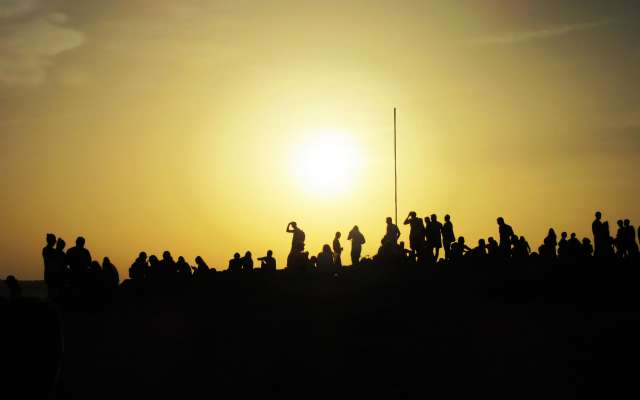
Warbixinaha safarka Isbayn
